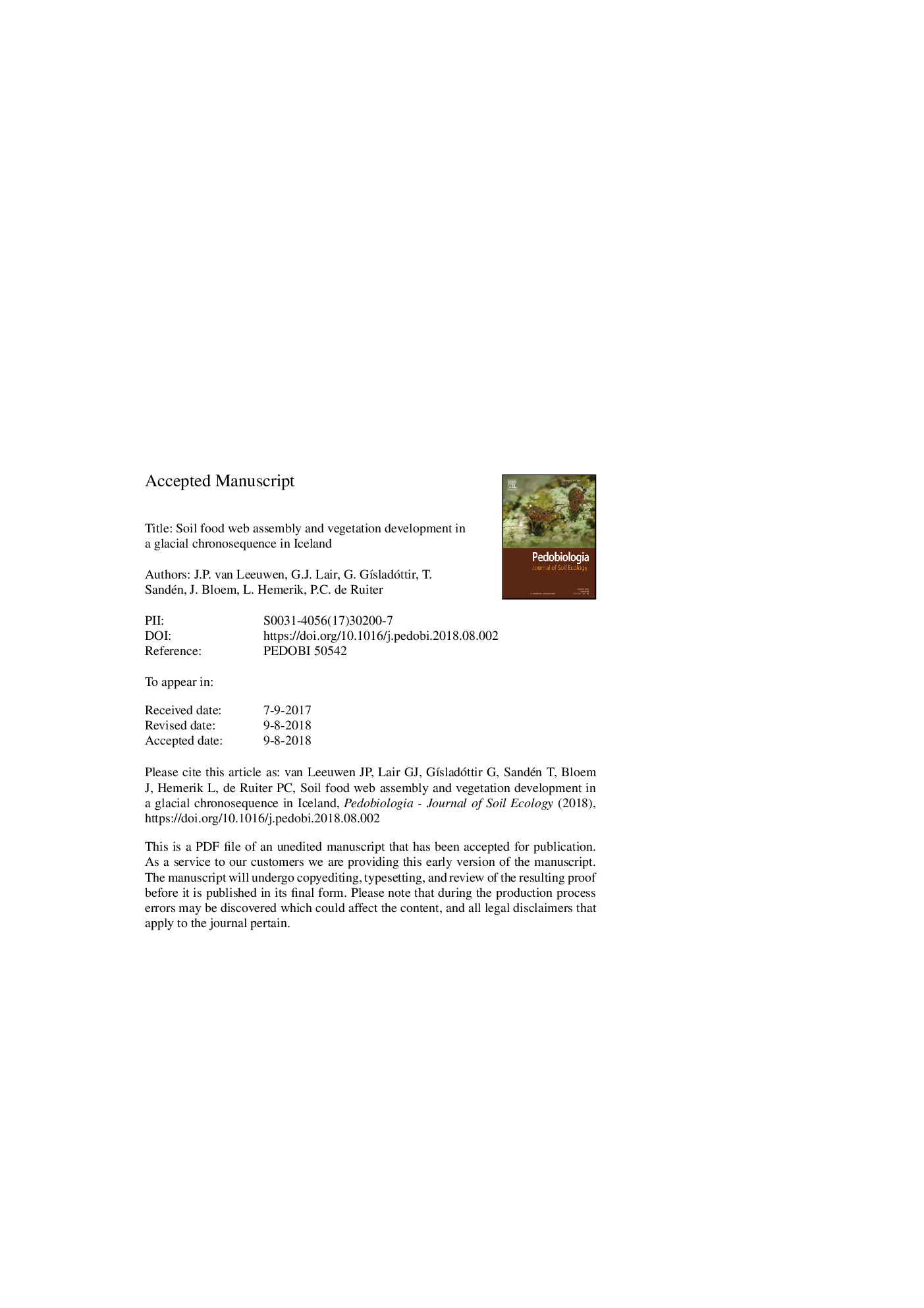| Article ID | Journal | Published Year | Pages | File Type |
|---|---|---|---|---|
| 9954343 | Pedobiologia | 2018 | 35 Pages |
Abstract
In line with our expectations all measured pools of carbon and nitrogen, and vegetation cover increased with age in the glacial forefield, but plant species richness levelled off after 30 years. Soil organisms generally increased in biomass with successional age, although some of the groups of soil organisms peaked at an intermediate successional stage. In contrast to our expectations, some of the calculated food web complexity metrics such as the number of trophic groups and trophic chain length did not increase linearly, but showed an intermediate peak or even decreased with successional age. However, plant cover and pools of carbon and nitrogen still increased after 120 years. From these results we conclude that soil ecosystem development takes more than a century under Icelandic climatic conditions to fully develop in terms of vegetation succession, food web structure and biogeochemical cycling.
Related Topics
Life Sciences
Agricultural and Biological Sciences
Animal Science and Zoology
Authors
J.P. van Leeuwen, G.J. Lair, G. GÃsladóttir, T. Sandén, J. Bloem, L. Hemerik, P.C. de Ruiter,
